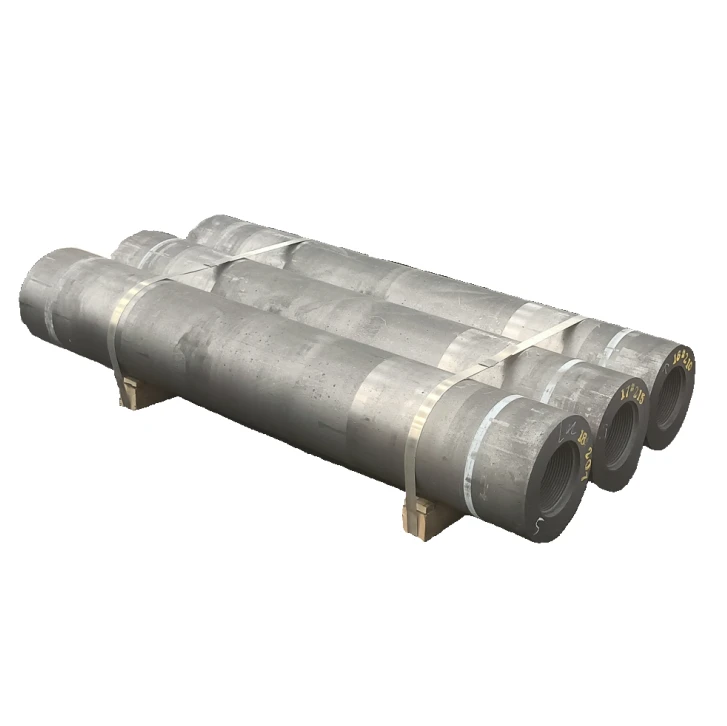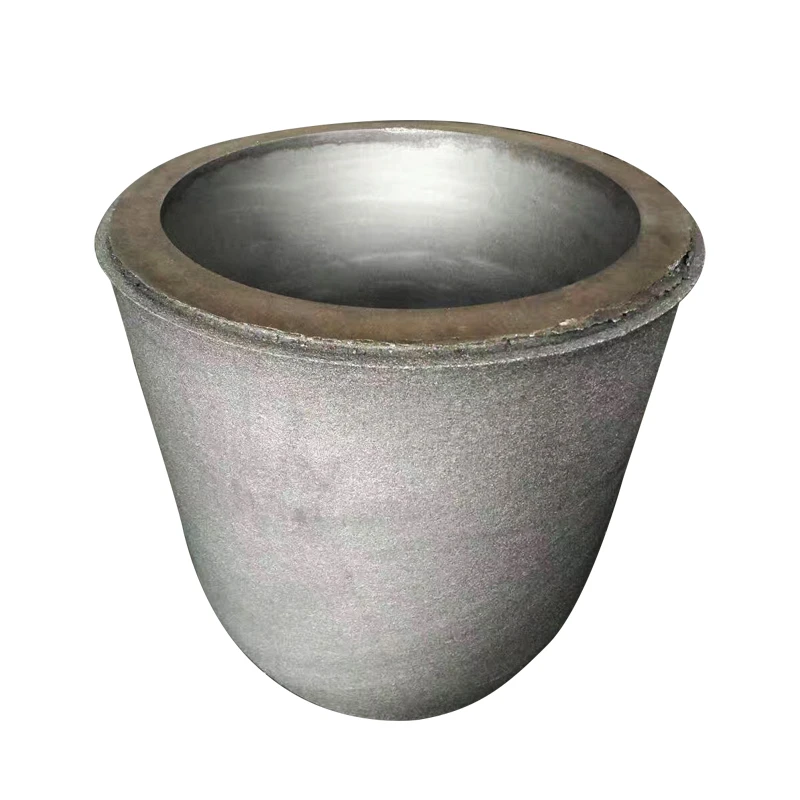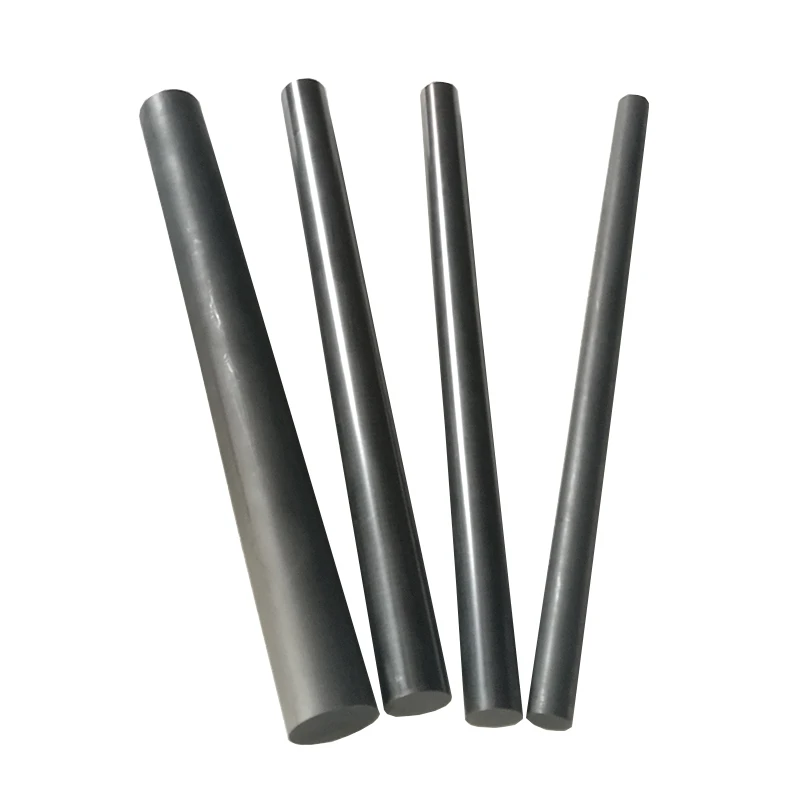As someone who has been in the graphite manufacturing business for decades, my name is Allen, and I’ve seen firsthand how the right materials can make or break a high-stakes industrial operation. For procurement officers like Mark Thompson and owners of steel mills or foundries, choosing the correct graphite electrode is not just a line item—it’s a critical decision that impacts efficiency, cost, and safety. This article is for you. We will demystify the world of graphite electrode uses, exploring why this humble form of carbon is an irreplaceable workhorse in so many industries. You’ll gain the insights needed to select high-quality graphite products, understand their applications, and partner with a reliable supplier, ensuring your operations run smoothly and profitably.
What Makes Graphite an Unbeatable Conductor for an Electrode?
At first glance, it might seem strange. How can the same stuff found in a pencil be strong enough to melt steel? The secret lies in graphite’s unique atomic structure. Graphite is an allotrope of carbon, meaning its carbon atoms are arranged in a specific way. Imagine sheets of paper stacked on top of each other. Each sheet is a layer of carbon atoms bonded together in a strong, stable hexagonal pattern. Within these layers, the bond is incredibly robust.
The real magic, however, happens between these layers. While the atoms within a layer are tightly held, the layers themselves are connected by much weaker forces. This structure allows some electrons to become "delocalized," meaning they aren’t tied to a single atom. Instead, they form a "sea" of free electrons that can move easily along the layers. This free movement of electrons is the very definition of an electrical current. It’s why graphite is a good conductor of electricity, a fundamental requirement for any electrode. While metals like copper are also excellent conductors, they would melt and vaporize at the extreme temperatures where graphite thrives.
How Do Graphite Electrodes Power the Modern Steel Industry?
The most significant electrode use for graphite is in Electric Arc Furnaces (EAFs). These are the giants of modern recycling, responsible for producing a vast portion of the world’s steel by melting down scrap metal. The process is a spectacle of immense power. Inside the furnace, massive graphite electrodes—some as wide as a person and several meters long—are lowered towards a pile of scrap steel. A tremendous electrical current is then passed through them.
This current leaps from the tip of the electrode to the scrap metal, creating an electric arc. This arc is an intensely bright and powerful discharge of electrical energy, generating temperatures that can exceed 3,000°C (5,400°F), which is hotter than the surface of the sun. The sheer heat generated by this electric arc quickly turns solid scrap steel into a molten liquid. No other material can both conduct the necessary amount of electricity and withstand such brutal high temperatures without disintegrating. This is why graphite electrodes are used as the primary heating element in EAF and ladle furnace technology.

Are All Graphite Electrodes Created Equal? A Look at Different Grades.
As a procurement officer, you know that not all products are the same, and this is especially true for the graphite electrode. The specific demands of a furnace dictate the type of electrode required. The primary distinction is the grade, which determines the electrode’s ability to handle electrical current and thermal stress.
Here’s a simple breakdown:
| Electrode Grade | Abbreviation | Key Raw Material | Current Capacity | Primary Application |
|---|---|---|---|---|
| Regular Power | RP | Standard Petroleum Coke | Low | Ladle furnaces, smaller EAFs for ferroalloys. |
| High Power | HP | High-quality Petroleum Coke | Medium-High | High-capacity EAFs for steelmaking. |
| Ultra-High Power | UHP | Premium Needle Coke | Very High | The most demanding and powerful EAFs. |
Choosing the right grade is a balance of performance and cost. Using an RP electrode in a UHP furnace would lead to rapid consumption and likely breakage, causing costly downtime. Conversely, using a UHP electrode where an HP would suffice is not cost-effective. We work closely with clients to match the right product to their equipment, such as our Ultra-high power graphite electrode for the most intense operations, ensuring optimal performance without overspending.
Why is Graphite Used as an Electrode in the Process of Electrolysis?
Beyond melting metals, another major graphite electrode use is in electrolysis. Electrolysis is a process that uses a direct electrical current to drive a chemical reaction that wouldn’t happen on its own. It’s fundamental to producing many essential materials. In an electrolysis cell, you have two electrodes: the anode (positive) and the cathode (negative). When a current is applied, ions in the solution are attracted to the oppositely charged electrode, where chemical reactions occur.
Graphite is used here for two main reasons. First, its electrical conductivity allows it to efficiently introduce the charge into the system. Second, and just as important, graphite is chemically inert in many environments. It won’t react with the electrolyte or the products being created, which prevents contamination. A classic example is the production of aluminum, where massive pre-baked carbon anode blocks are used. In this process, the carbon anode is slowly consumed as it reacts with oxygen, but its stability and conductivity are essential. Another use is in producing chlorine gas and caustic soda, where graphite electrodes facilitate the chemical split without degrading in the corrosive environment.
What are the Key Refractory Properties of Graphite Electrode Materials?
The term "refractory" is crucial in our industry. It simply means a material is highly resistant to heat and pressure. The performance of a graphite electrode in a furnace depends entirely on its refractory capabilities. Graphite’s structure gives it an incredibly high melting point of around 3,650°C (6,602°F). It doesn’t melt; it sublimes, turning from a solid directly into a gas at these extreme temperatures. This is vital because an EAF operates at temperatures that would liquefy almost any other conductor.
Furthermore, graphite has excellent thermal shock resistance. The electrode goes from cool ambient temperatures to thousands of degrees in moments. Many materials would crack or shatter under such a rapid change, but graphite can handle it. It also has a very low coefficient of thermal expansion, meaning it doesn’t expand much when heated. This structural stability is key to maintaining the integrity of the electrode and ensuring the electric arc is stable and efficient. This combination of properties makes graphite one of the most reliable electrode materials for any high-temperature application.
Beyond Steel: What Are Other Surprising Uses of Graphite?
While steelmaking is the largest consumer of graphite electrodes, its unique properties make it invaluable in many other fields. The versatility of graphite products is truly remarkable.
- Electrical Discharge Machining (EDM): In manufacturing, EDM is a technique used to cut and shape hard metals with extreme precision. A shaped graphite electrode is brought close to the workpiece, and a spark is used to erode the metal, creating intricate shapes that are impossible with traditional drilling or milling.
- Lithium-ion Batteries: The device you’re likely reading this on is powered by graphite. Graphite is the primary material used as an electrode on the anode side of most lithium-ion batteries. Its layered structure is perfect for holding lithium ions during the charging process and releasing them to generate power.
- Foundries and Metallurgy: For melting non-ferrous metals like gold, silver, brass, and aluminum, foundries rely on high temperature resistant graphite crucibles. The graphite crucible can withstand the heat of the molten metal and is non-reactive, ensuring the purity of the final product.
- Nuclear Reactors: In some nuclear reactor designs, high-purity graphite blocks are used as a neutron moderator. They slow down the fast neutrons produced during fission, helping to sustain a controlled nuclear chain reaction.

How Can You Verify the Quality and Integrity of a Graphite Electrode Supplier?
This is a critical question for any procurement manager, and as a supplier myself, I believe in complete transparency. For someone like Mark, who has experienced the pain of shipment delays and certificate fraud, trust is everything. Here are a few things I advise all my partners to look for.
First, don’t just accept a generic ISO 9001 certificate. Ask for batch-specific quality inspection reports, including data on electrical resistivity, bulk density, and flexural strength. A reputable factory will have this data for every electrode they produce. Second, ask for references or case studies from companies in your country. Real-world performance is the ultimate test.
Third, evaluate their communication and logistics capability. A good sales representative should not only be responsive but also knowledgeable. They should understand your technical needs and be able to foresee and solve potential shipping issues. Inefficient communication is often the root cause of delays that can shut down your production line. We pride ourselves on having an experienced export team that manages the entire process, from production scheduling to final delivery, providing peace of mind.
What is the Journey of a High-Quality Graphite Electrode from Raw Material to Finished Product?
The creation of a high-quality graphite electrode is a long and complex manufacturing process that can take several months. It’s a testament to why this is a specialized field. The journey begins with carefully selected raw materials, primarily calcined petroleum coke (and premium needle coke for UHP grades) and coal tar pitch, which acts as a binder.
These ingredients are mixed and then extruded or molded into a "green" electrode. This green electrode is then slowly baked in a kiln for several weeks to carbonize the pitch. After baking, it undergoes impregnation, where it’s saturated with more liquid pitch under pressure to increase its density and strength, and then it’s baked a second time. The most critical step is graphitization. The baked electrode is placed in a special electric furnace and heated to nearly 3,000°C. This intense heat rearranges the amorphous carbon atoms into the ordered, layered, crystalline structure of synthetic graphite. This is what gives the electrode its fantastic electrical conductivity and thermal resistance. Finally, the graphite cylinder is machined with extreme precision to create threaded sockets for connecting electrodes together.
How Does Graphite Electrode Performance Truly Impact Your Bottom Line?
The initial purchase price of a graphite electrode is only one part of the total cost equation. A lower-priced electrode from an unproven supplier can often be far more expensive in the long run. The key metric is the consumption rate, measured in kilograms of graphite consumed per ton of steel produced. A high-quality electrode with low electrical resistance and high density will have a lower consumption rate, saving you material costs.
Furthermore, a poorly made electrode is more prone to thermal shock cracking or breakage during operation. An electrode breaking in the furnace is a major incident. It means costly downtime for removal, potential damage to the furnace lining, and a disruption to your entire production schedule. A high-quality electrode, like our High-strength graphite blocks, provides reliability. Investing in a superior graphite electrode is an investment in operational stability and overall efficiency. The slight premium paid upfront is often returned many times over through lower consumption, less downtime, and higher productivity.

What Does the Future Hold for Graphite Electrode Technology and Its Uses?
The world of graphite is anything but static. As industries evolve, so do the demands placed on graphite products. Research is constantly underway to improve electrode performance. This includes developing new impregnation materials and manufacturing techniques to further increase electrode density and strength, which reduces consumption rates. There’s also a strong focus on improving the consistency of raw materials like needle coke to ensure every electrode performs to the highest standard.
Looking ahead, two major trends will drive the demand for graphite. First, the global push for greener steel production favors the EAF method, which uses recycled scrap and less energy than traditional blast furnaces. This means more EAFs will be built, increasing the need for UHP graphite electrodes. Second, the explosion of the electric vehicle market is creating unprecedented demand for the high-purity graphite used in lithium-ion batteries. As a long-standing factory, we are committed to innovating and scaling our production to meet these future challenges, ensuring we remain a trusted partner for all graphite electrode uses.
Key Takeaways to Remember:
- Graphite’s unique layered atomic structure with delocalized electrons makes it an excellent electrical conductor that can withstand extreme heat.
- The primary use of graphite electrodes is in Electric Arc Furnaces (EAFs) to melt scrap steel, a process that relies on graphite’s ability to sustain a high-current electric arc.
- Electrodes come in different grades (RP, HP, UHP) tailored to the power of the furnace. Choosing the right grade is crucial for efficiency and cost-effectiveness.
- Graphite is also essential in electrolysis for producing materials like aluminum and chlorine because it is both a good conductor and chemically inert.
- When selecting a supplier, look beyond price. Verify quality through batch-specific test reports, evaluate their communication, and prioritize reliability to avoid costly downtime.
- The performance of an electrode directly impacts your operational costs. A high-quality electrode lowers consumption rates and reduces the risk of breakage, making it more cost-effective over its lifespan.
Post time: 06-20-2025


